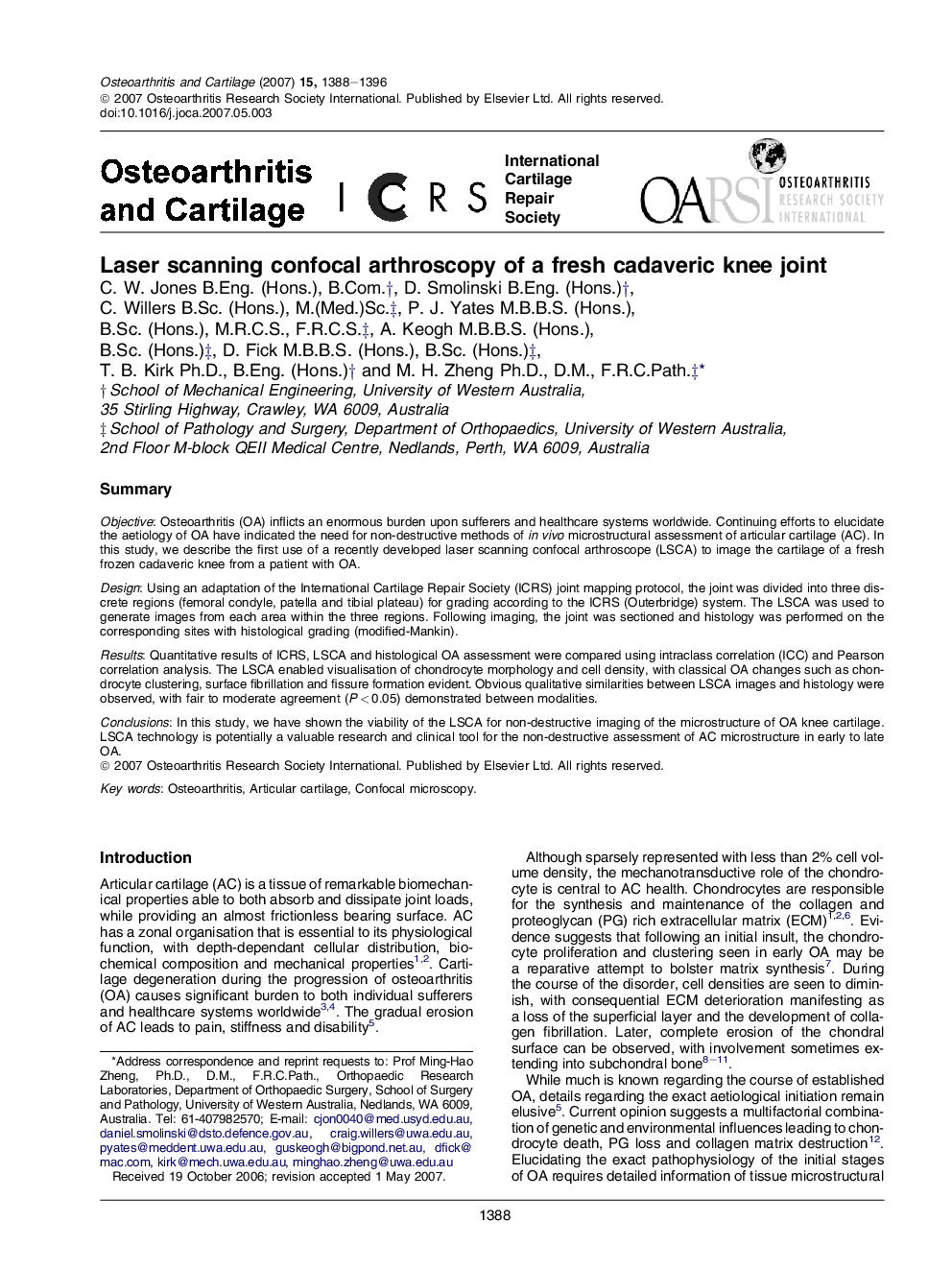| Article ID | Journal | Published Year | Pages | File Type |
|---|---|---|---|---|
| 3381766 | Osteoarthritis and Cartilage | 2007 | 9 Pages |
SummaryObjectiveOsteoarthritis (OA) inflicts an enormous burden upon sufferers and healthcare systems worldwide. Continuing efforts to elucidate the aetiology of OA have indicated the need for non-destructive methods of in vivo microstructural assessment of articular cartilage (AC). In this study, we describe the first use of a recently developed laser scanning confocal arthroscope (LSCA) to image the cartilage of a fresh frozen cadaveric knee from a patient with OA.DesignUsing an adaptation of the International Cartilage Repair Society (ICRS) joint mapping protocol, the joint was divided into three discrete regions (femoral condyle, patella and tibial plateau) for grading according to the ICRS (Outerbridge) system. The LSCA was used to generate images from each area within the three regions. Following imaging, the joint was sectioned and histology was performed on the corresponding sites with histological grading (modified-Mankin).ResultsQuantitative results of ICRS, LSCA and histological OA assessment were compared using intraclass correlation (ICC) and Pearson correlation analysis. The LSCA enabled visualisation of chondrocyte morphology and cell density, with classical OA changes such as chondrocyte clustering, surface fibrillation and fissure formation evident. Obvious qualitative similarities between LSCA images and histology were observed, with fair to moderate agreement (P < 0.05) demonstrated between modalities.ConclusionsIn this study, we have shown the viability of the LSCA for non-destructive imaging of the microstructure of OA knee cartilage. LSCA technology is potentially a valuable research and clinical tool for the non-destructive assessment of AC microstructure in early to late OA.
